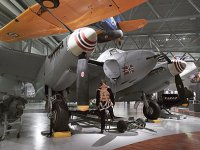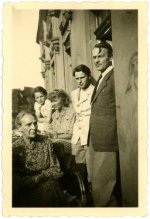Spoks
Well-known
My father was a pilot during the war and flew first this rare bird at Akurøyri Iceland- http://en.wikipedia.org/wiki/Northrop_N-3PB and the somewhat better known Mosquito IV (bomber version) http://en.wikipedia.org/wiki/De_Havilland_Mosquito - the last one over the landings at Sicily, Salerno and Anzio, among others.
In the late 60' or early 70' he flew with different airliners from Sydney Australia back home to Norway and 'knew all the pilots'. Most of whom had flown bombers over Germany during WWII. My father was a pilot in RNAF up until 47' (or thereabouts, I am not sure, really) when close to half the airforce was sacked. There were no use for them anymore.
Olsen,
Your father served first in Sq. 330 at Iceland with Northrops and then at Sq. 334 with Mosquitoes, right? Then it must have been the Mosquito Mrk. VI - Fighter/bomber version, - with cannons in the nose. Not the IV bomber version w/glass nose. Sq. 334 had only the Mrk VI version.



